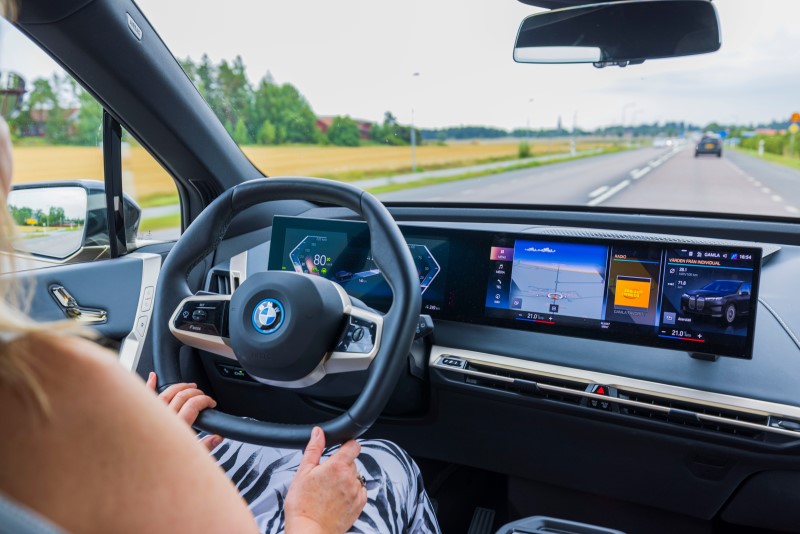The Nordic countries have developed C-ITS in a series of NordicWay actions, conducting also evaluation to assess the feasibility of C-ITS service provision in the Nordic countries. Overall, the results showed that the feasibility seems promising. However, work remains in building optimal ecosystems where the public and private stakeholders take the role fit for them and cooperate in a viable manner. As the implementation costs of the services seem substantial, long-term commitment will be needed of all stakeholders involved.

Decade of Nordic collaboration on C-ITS
The Nordic countries Denmark, Finland, Norway and Sweden developed C-ITS in cooperation in a series of NordicWay actions: NordicWay 1 (2015-2017), NordicWay 2(2017-2020) and NordicWay 3 (2019-2023). NordicWay actions conducted evaluation to assess the feasibility of C-ITS service provision in the Nordic countries. In NordicWay 3, different C-ITS pilots identified evaluation topics most relevant for their next steps towards full scale implementation and defined the method for their evaluation. Ecosystems were selected as a topic for joint evaluation. The methods for identifying user acceptance included questionnaires and interviews. Technical performance and quality of service was studied with a simulation and field experiments. Driver behaviour was studied with driving simulators and questionnaires. Socio-economic impact was studied using literature reviews, simulations and statistics. Ecosystems were assessed by organising project internal workshops and collecting views from different pilots using common templates. In addition to these research questions related to C-ITS, a literature review was made on impacts of automation in road transportation, especially in the Nordic context.
Solutions for technical implementation
NordicWay 3 looked for specific solutions for implementing C-ITS services, especially in urban areas. A solution to predict time between red and green traffic signals, with acceptable quality, was identified for Trondheim. In Helsinki, a 3D Lidar Edge AI solution was found to work relatively well for timely prewarning the turning traffic of a cyclist approaching the crossing. NordicWay 3 also confirmed that the latencies were sufficiently low for informative services, yet, the end-user applications should be specifically designed to minimise it. The results of NordicWay 3 confirmed that 4G and 5G network technologies can provide the connectivity and capacity needed for C-ITS services, and future developments of 5G may even improve this. The study on the match between digital and real-world speed limit signs showed a mismatch of 5-11%. In conclusion, progress was made for the technical implementation of the services.
From societal benefits to willingness to use
The socio-economic impact of an approaching emergency vehicle warning service was addressed. According to the results, it can lower the risk of mid-intersection collisions with civilian drivers, and shorten travel time for emergency vehicles. The overall investment for the service was estimated to be less than 2M€ and recurring costs 400k€ in total annually. However, the socio-economic value of the benefits of EVA could not be estimated.
The correct reaction of the warned drivers is a necessity to gain any benefits from C-ITS services. The driver behaviour studies done in NordicWay 3 showed that the drivers reacted to the given information about the accident zone correctly and without hazardous effect in terms of mean speed change, and that in an intersection, their reaction was slower and the gradual braking reaction was earlier than for those without the service.
Without awareness and acceptance, there is no use of services and the societal benefits cannot be achieved. A survey was conducted on the acceptance of service related to approaching emergency vehicles and accident zones, and confirmed the positive attitudes for both services. The results of another study showed that the transport industry has experience with some real-time information services, the attitudes towards the introduction of C-ITS services were mainly positive, and the transport companies did not experience a problem with paying for the services, provided that the benefits the services bring to the company are verifiable.
Roles and responsibilities in C-ITS ecosystems
NordicWay 3 put effort into analysing the ecosystems, e.g. what roles are needed in the ecosystems, the characteristics of actors that have taken these roles, and what would be the requirements for these actors in general. There is no single model that would be the ultimate solution for all but there are different solutions we have described.
Conclusions
In conclusion, new insights of the feasibility of the provision of C-ITS services were gained in NordicWay 3. Overall, the feasibility, in terms of technical implementation, acceptance and how driver behaviour impacts the services, seems promising. The current mobile networks were assessed to be well suited to carry the average expected C-ITS messaging traffic levels. There is even some willingness to pay for the services among the transport industry – if the benefits of the service are clear. However, work remains in building optimal ecosystems where the public and private stakeholders take the role fit for them and cooperate in a viable manner. As the implementation costs of the services seem substantial, long-term commitment will be needed of all stakeholders involved.
More information
NordicWay 3 Evaluation results report is available at https://assets-global.website-files.com/5c487d8f7febe4125879c2d8/6638a46ce0a4a75e475dcd01_NordicWay3_Evaluation_Results_FINAL%20EU%20logo.pdf
Text: Satu Innamaa, VTT

Contact: Satu Innamaa
VTT Technical Research Centre of Finland Ltd., Finland
satu.innamaa@vtt.fi






Follow us: